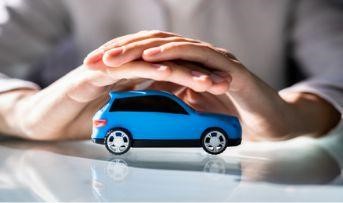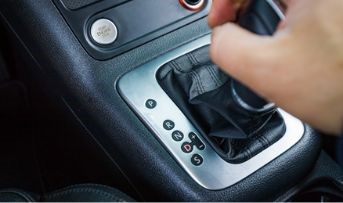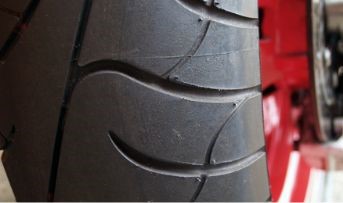General Insurance Blogs, Articles & Updates by - Magma HDI
Have us call you
- RENEW YOUR POLICY
- BUY NEW POLICY

Learn more about engine protection add-ons in two wheeler insurance
Bike engine damage can be severe and adversely impact you financially. Even though it doesn't break down often, fixing the engine can be expensive. An engine protection in your two wheeler insurance helps you in case of damage caused by water getting into the engine or oil leaking and making the engine non-functional.
You always have to select it as add-on insurance, as the comprehensive coverage does not cover the engine. For a little higher premium, you may rest easy knowing that you are protected financially if the insured bike's engine suffers damage.
The bike engine protection add-on covers the cost of repairing or replacing engine and gearbox components damaged by water intrusion, lubricating oil or coolant leaks, or a hydrostatic lock of the covered bike. The engine protection add-on is essential that you should consider when buying bike insurance.
The two-wheeler engine protection cover's advantages are as follows:
• It covers the cost of the bike's most expensive component - the engine
• Protection against physical harm caused by hydraulic lock to the engine and gearbox
• Financial protection against engine oil or lubricant leaks caused by water intrusion
• Provides monetary security
• Ideal for residents of flood-prone areas
The engine protection add-on does not cover the following items:
• Any maintenance or replacement due to normal wear and tear
• Repair or replacement of an internal part of the engine or gearbox because the driver was drunk, illegally racing, or the bike was driven while the driver's licence was invalid
• Damage or losses caused by engine corrosion
• The price of lubricants or engine oil
• Any claim made following the deadline for notifying the insurer of the incident
• Any claim in which engine parts were repaired or replaced without first notifying the insurance provider
• Any claims that are beyond the manufacturer's warranty
Do you need an engine protection add-on?
When you buy insurance from 2 wheeler insurance India, the "Engine Protection" is generally not covered. It is an advantage that is provided as an add-on. You should opt for this feature if you live in a region prone to flooding. For a small additional premium, you can relax knowing that the most expensive component of your motorcycle is covered and stop worrying about unexpected repair costs resulting from engine damage.
Who should purchase the engine protection option?
With a small cost on your annual premium, the engine protection add-on cover provides additional protection. For the following reasons, it would be best if you gave some thinking to get the bike engine protection add-on:
• If you have just purchased a new bike
• If you live in a flood-prone location
• If you want financial protection against significant damage to the engine parts
Understand that any damage to the engine's internal components can be expensive. To prevent unintended damage to the engine or gearbox components, check the engine oil level frequently. The bike should be serviced regularly as per the schedule, and you should change parts like the air filter and oil periodically to keep the engine running smoothly.
Avoid over-accelerating the engine because this could cause it to overheat and harm its internal components. Also, avoid buying duplicate parts during any post-damage repair. Lastly, buy a reliable 2 wheeler insurance India with an efficient engine protection add-on to enjoy an exceptional benefit.
Click HERE to buy the best 2 wheeler insurance India.
Disclaimer: The information provided above is for illustrative purposes only. To get more details, please refer to policy wordings and prospectus before purchasing a policy.

Bike-to-bike communication is a necessity to stay safe on long adventures
Are you planning an adventure group trip on your motorcycle? Do you have all the necessary safety gear and insurance coverage in place? While helmets, protective clothing, and two wheeler insurance online in India are essential for any rider, have you considered bike-to-bike communication? On-road communication with fellow riders ensures a safe and enjoyable ride, especially for long adventures.
In this article, we will discuss why bike-to-bike communication is essential for safe adventure rides and how it can enhance your overall riding experience.
The importance of bike-to-bike communication
Riding a motorcycle on long adventures can be an exhilarating experience. Although, it can also be challenging, especially when you are riding in a group. When riding with a group, it is essential to maintain proper communication to ensure everyone's safety.
Bike-to-bike communication allows riders to stay in touch, share information, and coordinate actions. It is advantageous when riding on unfamiliar roads or encountering unexpected obstacles.
There are numerous benefits of bike-to-bike communication. For example, it allows riders to warn each other of potential hazards, such as potholes, gravel, or other obstacles on the road. It can also help riders to navigate tricky terrains and communicate directions.
Types of bike-to-bike communication
There are several ways to establish bike-to-bike communication. The most common method is through hand signals. Hand signals are simple and effective, and they do not require any special equipment. However, they can be challenging when riding at high speeds or in noisy environments.
Another way to establish bike-to-bike communication is through Bluetooth headsets. Bluetooth headsets are wireless communication devices that can be attached to the helmet. They allow riders to talk to each other through a built-in microphone and speakers. Bluetooth headsets are convenient, and they provide clear and uninterrupted communication. However, they can be expensive and may require a specific installation.
CB (Citizen Band) radios are another way to establish bike-to-bike communication. CB radios are two-way radios that allow riders to communicate with each other within a limited range. They are effective for long-range communication and are helpful when riding in areas with poor cell phone coverage. However, CB radios are bulky and require a power source, making them less portable.
The advantages of bike-to-bike communication
Bike-to-bike communication has several advantages that make it essential for safe adventure rides:
1. It can prevent accidents by enabling riders to warn each other of potential hazards on the road.
2. It can enhance the riding experience by facilitating social interactions and camaraderie among riders. Riding with a group is often more enjoyable than riding alone, and bike-to-bike communication can make the experience memorable.
3. Bike-to-bike communication can provide security and confidence when riding in unfamiliar territories.
Bike-to-bike communication is no longer a luxury but necessary for safe and enjoyable motorcycle adventures. By using a communication system, riders can remain connected and aware of their surroundings, enabling them to make quick and informed decisions.
Communicating with fellow riders can be especially important when encountering unexpected challenges on the road or when travelling in a group. By staying in constant contact, riders can reduce the risk of accidents, get help when needed, and stay on track toward their destination.
Whether planning a long-distance ride or just a quick trip with friends, having a reliable communication system will allow you to fully immerse yourself in the journey and enjoy the ride to its fullest potential. So, be sure to equip yourself with the right tools and enjoy the ride with peace of mind knowing you are fully connected and ready for unprecedented situations.
While bike-to-bike communication is crucial for safe adventure rides, it is not the only aspect requiring attention. Insurance coverage is also an essential component of any rider's safety toolkit. Two wheeler insurance online India provides financial protection against accidents, theft, and damage to the vehicle. In addition, it also offers third-party liability coverage, which protects the rider against legal liabilities arising from injury or damage to third-party property. Ensure your trip's safety by investing in reliable two wheeler insurance online India.
Click HERE to learn more about the benefits of purchasing two wheeler insurance online India.
Disclaimer: The information provided above is for illustrative purposes only. To get more details, please refer to policy wordings and prospectus before purchasing a policy.

Let's understand consumables in car insurance
The MV Act, or the Motor Vehicles Act of 1988, regulates the legal environment surrounding motor vehicles. It states that every car owner must buy new car insurance after acquiring a new car or renew it immediately after its expiry. It is one of the three must-carry-along documents for drivers, including a PUC certificate and driver's licence. With increased regulations and growing awareness regarding the financial burden of shouldering expenses in case of an accident, the policyholder base of motor insurance has risen steadily.
Despite the importance of car insurance, it cannot be said to be a comprehensive policy. Some aspects are left out in the document's fine print and are available as add-on facilities. Therefore, while most people know the need to buy new car insurance, only some are aware of general exclusions.
A typical example is the consumables in car insurance, which is discussed in detail in this blog.
General inclusions under car insurance:
While each insurance company may offer a slightly varied version of car insurance, generally, third-party car insurance covers accidents that cause damages to other parties or their properties. Without such a policy, you will have to bear the losses and compensate the affected party.
A comprehensive policy has two aspects, a third-party car insurance policy and own damages cover. Thus, it provides enhanced protection against personal injuries and manmade and natural disasters. Since consumables are nowhere mentioned as included, it is implied that they are an exclusion from the policy.
Understanding consumables:
Consumables in accounting refer to assets used within the process and are sometimes held on standby for future use. The former part of the explanation applies to consumables in cars. These items are used in the general running of a vehicle and are subjected to continuous wear and tear.
Consumables in a car can be identified as brake oils, engine oil, lubricants, refrigerant for AC, ball bearings, nuts, screws, bolts, washers, etc. In simpler words, they aid in the efficient running of the vehicle without forming a large chunk of the cost and are put to use regularly, which is why they deteriorate faster than other car parts.
Consumables insurance:
While consumables may not appear to be a prominent aspect of the relevant cost incurred in purchasing a car, they play a crucial role in the proper functioning of the vehicle and must be noticed. It is prudent to insure your car's consumables to prevent any financial losses you may have to bear due to improper condition of consumables.
Although not included in comprehensive insurance, insurance companies provide the facility to select add-on consumables insurance by paying an additional premium for the service.
Add-on consumables insurance covers expenses incurred for replacing items like engine oil, brake oil, steering oil, coolant, AC gas, refrigerant, dust filters, air filters, engine filters, bolts, nuts, washers, screws, grease, etc. It is important to note that consumable insurance is usually provided for cars not used for more than five years.
Exclusions of consumables insurance:
It is a specific add-on insurance type that only covers relevant costs relating to consumables. The general conditions to claims are similar to any other car insurance or allied add-on facility. In the following conditions, the claim is not admissible:
● Driving without having a valid driver's licence
● Driving under the confluence of substances or liquor
● Misuse of personal vehicle for commercial use
● Prolonged delay in informing the insurer regarding the replacement of consumables
● Misuse or overuse of policy to claim the maximum benefit, as against a rational person's actions
Consumables play an essential role in a car and must be considered when you buy new car insurance. The policy is purchased by fulfilling common conditions similar to car insurance. It helps file a claim for replacement costs of consumables by informing the insurer.
Click HERE to buy new car insurance policy.
Disclaimer: The information provided above is for illustrative purposes only. To get more details, please refer to policy wordings and prospectus before purchasing a policy.

Most common summertime allergies, their symptoms and treatment
Summer is a time for fun and outdoor activities, but allergies can become a spoilsport for many people. Various allergens can thrive in higher temperatures and humidity levels, causing people to experience allergic reactions. Pollen, mould, insect stings, food, and sun allergies are among the most prevalent summer allergies. Sneezing, runny nose, and more severe reactions like anaphylaxis are just a few of the symptoms that these allergies can produce.
Here's something you must know for your relief. Buying a health insurance policy for family covers various medical costs, including those incurred because of allergies. Depending on the policy, doctor visits, prescription drugs, diagnostic tests, and hospitalisation may all be covered.
Here, we'll go into detail on the symptoms of the most prevalent summertime allergies. Understand these symptoms so that you can work out the remedies to prevent the situation from getting worse.
1. Mould allergies
Mould is a fungus that grows well in warm, moist places like restrooms, basements, and air conditioners. The summer months bring higher humidity levels, perfect for mould growth.
Inhaled mould spores have the potential to cause following allergic responses.
● Runny nose
● Itchy eyes
● Skin rashes
● Coughing
● Wheezing
Mould allergies occasionally result in respiratory issues or sinus infections that can disrupt your routine.
2. Sun allergies
Sun allergies are common during summer. The most common cause of sun allergies is an immunological response to the sun's ultraviolet (UV) radiation that results in an allergic reaction.
Sun allergy signs and symptoms include:
● Itching
● Swelling
● Burning sensation
● Redness, rash, hives, and blistering on the skin
● Headache
Sun allergies may occasionally result in fever and chills. Covered skin, a hat, an umbrella and sunscreen can be effective when heading out in the sun.
3. Pollen allergies
Hay fever and allergic rhinitis are additional names for allergies to pollen. During the reproductive process, plants release pollen. It can trigger an allergic reaction in certain people when inhaled. Symptoms can vary in severity depending on the individual and the type of pollen that causes the reaction.
Pollen allergies can cause these symptoms:
● Congestion
● Itchy and watery eyes
● Sneezing
● Fatigue
● Runny nose
● Throat irritation
● Headache
Pollen allergy episodes and breathing difficulties might occur in extreme situations. If
you are susceptible to pollen allergy, wear a mask when heading out.
4. Food allergies
Food allergies can occur during the summer, a season for picnics, barbecues, and outdoor dining.
Food allergies can cause these symptoms:
● Abdominal pain
● Diarrhoea
● Nausea and vomiting
● Anaphylaxis (a severe, life-threatening allergic reaction)
● Itching, swelling, and hives
● Difficulty breathing
Those with food allergies must remain cautious to prevent unintended exposure to allergens.
5. Insect sting allergies
Bug stings are common in summer months as Insects like bees, wasps, and hornets are more active.
Among the signs of an allergy to bug stings are:
● Dizziness
● Difficulty breathing
● Nausea and vomiting
● Diarrhoea
● Swelling, itching, redness, and pain around the sting area
● Hives
Preventing summertime allergies
You should take precautions to lower the risk of allergy reactions. Consider the following tactics:
● Verify the pollen count: Daily pollen counts for your location are available on many weather websites and apps. Before scheduling any outdoor activities, check the pollen count. Try to stay inside during periods of high pollen.
● Utilise air conditioning: The air conditioning in your house might help filter out allergies. Use a HEPA-filtered air conditioner to keep allergens out and close the windows and doors.
● Know what triggers you: Determining which allergens cause your symptoms is the first step in preventing summer allergies. This can apply to meals, pollen, mould, bug stings, etc. When you are aware of your triggers, you can take precautions to prevent them.
● Maintain a spotless home: The number of allergens in your home can be decreased with routine cleaning. Keep the carpets and upholstery clean, and wash your bedding and curtains frequently.
● Putting on protective clothes: Wear long sleeve shirts and slacks when you're outside to shield your skin from bug bites and sunburn. Pollen exposure can also be decreased by donning a hat and sunglasses.
For many people, having allergies in the summertime can be unpleasant. Sneezing and a runny nose are subtle symptoms. Anaphylaxis is a more severe symptom. It's essential to know your triggers, take precautions, and consider immunotherapy to prevent summertime allergies. Also, speaking with a healthcare professional about allergy prevention and treatment is essential. It is also crucial to have an appropriate health insurance policy for family. A comprehensive health insurance plan can help you and your loved ones stay protected from the financial adversities that may arise due to health emergencies.
Click HERE to buy a health insurance policy for family.
Disclaimer: The information provided above is for illustrative purposes only. To get more details, please refer to policy wordings and prospectus before purchasing a policy.

Detox with a wellness retreat at these healing destinations
Wellness is one of the most important priorities in life. It revolves around the complete well-being of mental, physical, and emotional states. Through wellness, the needs of the body and mind are met completely. It helps you achieve a state of rejuvenation. It is essential to experience a sense of solitude once in a while to fully detoxify your mind and body.
When you work excessively, your body gets tired after a point. It can lead to burnout or emotional breakdown. You need to take a detour and calm yourself down to avoid this. This can be achieved by escaping city life's hustle and restoring energy and enthusiasm at some peaceful locations. Wellness retreats with the abundance of nature, serenity, and greenery have a calming effect on you.
In this article, we recommend some of the popular wellness retreats in India that you should visit at least once a year to enjoy a digital detox and revitalise yourself. Before you go on your vacation, get the best personal accident insurance India to protect yourself from financial loss due to accidents during the trip.
Now, let's look at the destinations to enjoy a wellness retreat.
1. Rishikesh, Uttarakhand
Known as the spiritual capital of India, Rishikesh is full of nature and positive vibes. There is a sense of tranquillity that surrounds this place. The riverbeds, ashrams, and valleys provide breath-taking sights and perfect locations to practise yoga and meditation. You can also attend the morning and evening aarti by the riverbank. This life-enriching experience immerses you in a deep sense of positivity.
2. Orchha, Madhya Pradesh
Once the capital of the Bundel state, Orchha is an underrated wellness destination in India. It has a collection of royal and eloquent monuments. The Orchha Fort is the main attraction, allowing you to relax and unwind. Spend the evening strolling by the side of Betwa river and behold the amazing sunset. If you are an adventure seeker, don't miss the river rafting or board the jungle safari for an exciting wilderness expedition.
3. Kovalam, Kerala
Famous for its Ayurvedic treatment, Kovalam is worth visiting in Kerala. There is a rich spice and team plantation that makes Kovalam a paradise. Surrounded by green vegetation, backwaters, and sea, it is a perfect setting for a never-like-before healing experience. Rejuvenation seems a sublime luxury here. You can do yoga or meditate and try stress and weight reduction treatments at some world-renowned Ayurvedic centres.
4. Darjeeling, West Bengal
Known as the "Queen of the Hills," Darjeeling should be on your wellness retreat's wishlist. The greenery of this place will give you the much-needed comfort. With hills all around and rustic villages, Darjeeling is a perfect place to discover happiness. The tea plantations and the scenic view of the Himalayas are to die for!
At least once a year, you need a definite break from your monotonous life to immerse in moments of joy. You can visit these picturesque destinations to experience the much-needed comfort and warmth you crave. While planning a relaxing break from the tiring city life, buy the best personal accident insurance India to protect you financially against mishaps.
Click HERE to buy the best personal accident insurance India.
Disclaimer: The information provided above is for illustrative purposes only. To get more details, please refer to policy wordings and prospectus before purchasing a policy.

Does your health insurance cover AYUSH treatments?
Alternative forms of medicine have been gaining popularity in recent years due to their holistic approach toward healthcare. India's traditional and complementary medical systems are Ayurveda, Yoga, Naturopathy, Unani, Siddha, and Homeopathy (AYUSH). These systems have been practised for centuries and aim to provide natural remedies for ailments, emphasising the use of herbs, natural products, and traditional practices.
AYUSH treatments are not only affordable but also have fewer to no side effects as compared to conventional medicines. These treatments focus on an individual's overall well-being and help prevent illness recurrence in the long run. Does your health insurance cover AYUSH treatments? Let's discuss this in detail in this blog.
The following are some aspects of AYUSH treatments:
1. Ayurveda
Ayurveda combines herbal medicines, dietary changes, and lifestyle modifications to treat various ailments. It helps maintain a balance between the mind, body, and spirit. It emphasises that the root cause of most diseases is an imbalance in the body, which can be corrected through natural remedies.
2. Yoga
Yoga is an ancient practice. It is a very active way to channelise your energy and combines physical postures, breathing exercises, and meditation to promote overall health and wellness. It helps in relieving stress, anxiety, and depression. It also helps in improving flexibility, strength, and balance. You'll strengthen your core with the right yoga practises.
3. Naturopathy
Naturopathy is a medicine system that believes in the body's natural ability to heal itself. It uses natural remedies such as herbs, diet, and lifestyle modifications to promote wellness. Naturopathy aims to identify the root cause of an illness and treat it rather than just fixing the symptoms.
4. Unani
Unani medicine is a medicine system that finds its roots in ancient Greece and later developed in Persia and India. It focuses on the balance of bodily fluids. To treat illnesses, Unani medicine uses natural remedies such as herbs, diet, and lifestyle modifications.
5. Siddha
Siddha medicine is a system that originated in South India. It functions on principle: the human body comprises five core elements - earth, water, fire, air, and ether. Siddha medicine uses natural remedies to combat health problems and boost the body's immunity.
6. Homoeopathy
Homoeopathy is a branch of medicine that believes in "like cures like." It uses natural remedies, primarily diluted in water, to stimulate the body's natural healing process. Homoeopathy intends to provide treatment for the fundamental reason of an illness rather than just the symptoms.
It's essential to have the best health insurance in India that covers AYUSH treatments for several reasons:
1. AYUSH treatments are often more affordable than conventional treatments, making them a viable option.
2. AYUSH treatments are based on natural remedies and have little to no side effects.
3. AYUSH treatments focus on the overall well-being of an individual, which means that they can prevent the recurrence of illnesses in the long run.
When searching for the best health insurance in India, consider the ones that provide coverage for AYUSH treatments to reap its benefits. It's important to note that AYUSH treatments should not replace traditional medicine and its conventional ways but as complementary treatment options. Always consult a qualified healthcare professional before undergoing any AYUSH treatment.
Also, coverage for AYUSH treatments may vary depending on the policy and the insurance provider. Some policies may only offer coverage for specific treatments, while others may have a limit on the amount of coverage available. It is, therefore, important to carefully review the policy terms and conditions to understand what is covered and what is not. Choose the best health insurance in India which serves your needs and avoids venting your pockets during an emergency.
Click HERE to learn more about the benefits of purchasing the best health insurance in India.
Disclaimer: The information provided above is for illustrative purposes only. To get more details, please refer to policy wordings and prospectus before purchasing a policy.

The best destinations in India to enjoy the new year vacation with family
Spending time with your family is an underrated form of therapy. It is the need of the hour with busy schedules, building work pressure, and the growing need to perform better and be indispensable at your workspace. However, with such heightened expectations, burnout is inevitable. In such times, a getaway with your loved ones works like a charm to rejuvenate yourself and develop stronger bonds.
The New Year is the perfect time to plan a vacation with your family. With schools, offices, and other institutes allowing winter break, it is the ideal time to explore a new destination or revisit old memories at a place you've been to. However, deciding the place is always the most challenging part.
Are you looking for adventure, tranquillity, or immersive activities? No matter your requirement, we've got it all covered in our list of the best places to enjoy your new year vacation in India. Always purchase general insurance to cover any accidental losses during your travel.
1. Ooty, Karnataka:
If you want to celebrate quality time with family amidst nature and live in the present rather than party, Ooty is the best destination for your vacation. Its lush greenery, plantations, multiple lakes to experience boating, quaint architecture, and pleasant weather make it a great place to picnic and relax.
2. Auli, Uttarakhand:
A must-visit for adventure enthusiasts and nature lovers alike, Auli has gained popularity over the years. The hill station hosts various skiing competitions during the winter months, making it the best time to try your luck at the sport.
3. Sikkim:
While the Northeast ravishes over the snow in the mountains, the region is also home to vast greenery and some exhilarating activities for the entire family. Boasting lush valleys, deep-rooted heritage, and the awe-inspiring beauty of nature, Sikkim also has Tibetan influence, making for an extraordinary cross-cultural experience.
4. Goa:
It is not a stretch to call Goa as the country's party capital. Gifted with long beaches, Portuguese-influenced cuisine, and party spots like no other, Goa has something to offer for people of all age groups with varied interests. Plan the most thrilling New Year bash with family and friends on the vibrant coastline of Goa and immerse yourself in an unmissable travel experience.
5. Udaipur, Rajasthan:
While Rajasthan is a popular place to visit in the winter, the footfall during the New Year celebrations is exceptionally high. Home to beautiful handicrafts, expanses of desert, well-preserved ancient forts, and rich culture, Udaipur gives off a royal feel and provides the best Rajasthani cuisine that caters to the diverse tastes of travellers from all parts of the nation.
6. Pondicherry:
Also known as Puducherry, a stay in the city provides the best of all things you may wish to experience. You can find adventure sports, quaint streets, beautiful French-influenced architecture, and the Auroville, all in the same place.
7. Malvan, Maharashtra:
Malvan is the best place to visit if you love beaches but wish to avoid crowds and enjoy a more private celebration with your family. The town boasts of providing similar experiences as Goa during the New year celebrations, but at a smaller scale. You can enjoy a happening time savouring lip-smacking Malvani cuisine and enthralling water-sports activities.
A new year vacation is the best way to bid farewell to the year that went past and reminisce memories while preparing for the upcoming year. Our recommendations include various options for people of different interests that allow you to spend cheerful time with your family, engage in authentic experiences, and enter the new year with a blast. Before choosing the location, always ensure that your general insurance provides robust travel coverage against the contingent expenses you may incur in case of any mishaps.
Click HERE to buy a reliable general insurance policy.
Disclaimer: The information provided above is for illustrative purposes only. To get more details, please refer to policy wordings and prospectus before purchasing a policy.

Health benefits of herbs: the overlooked secret for wellness!
Awareness and enthusiasm about health and wellness have constantly been growing in the country, and people of all ages are paying heed to it. While the increased interest in comprehensive and affordable health insurance plans is a welcome preventive measure, we must not forget simple changes that can help maintain one's health.
Today we'll address one of the overlooked secrets of the health benefits of herbs! Herbs are the leafy part of the plant, used in cooking and as medicines. Herbs can add natural flavours and colours to any drink or dish. Besides cooking, herbs are an excellent way to prevent many health problems.
Health benefits of herbs
Consuming herbs may prevent the risks of heart disease, cancer, and diabetes. It also helps to reduce blood clots and has anti-tumour properties. Various herbs offer health benefits, some of which are mentioned below:
● Garlic and lemongrass may help prevent cholesterol
● Fenugreek may help to control blood sugar
● Some herbs, such as garlic, onion, mint, and basil prevent cancer
● They are also rich in antioxidants, which help reduce low-density lipoproteins
● Fresh herbs contain more antioxidants as compared to dried herbs
Top herbal medicines to prevent health problems
According to the World Health Organization, 11 percent of medicines prescribed worldwide are exclusively of plant origin. Herbal medicines are the traditional way to treat many health diseases.
In today's time, plants can help treat several health issues, including cough, cold, allergies, wounds, fatigue, skin infections, and even cancer. These herbs are less expensive and the safest treatment method. And that is why people choose a traditional path for their treatment because it has no side effects. Herbal medicines offer a natural way of using plant substances to treat illnesses.
The top herbal medicines to prevent health problems worldwide are given below:
● Garlic: It contains numerous nutrients and mainly helps treat diabetes and boosts the immune system. It also helps to regulate blood pressure, fight fungal allergies and infections and improve hair loss.
● Ginger: It relieves indigestion and nausea, reduces pain and stomach ulcers, and boosts the immune and respiratory systems.
● Turmeric: Turmeric has a very long history of medical use. It is known to be the most beneficial traditional way to treat illnesses. It has many health benefits, such as preventing blood clots, fighting depression, managing diabetes, and even fighting cancer.
● Aloe Vera: It is mainly used for constipation, skin diseases, and infections and is a natural remedy for colic. It can soothe rashes and skin irritation and treat burns, which is also beneficial for hair loss and scalp.
● Feverfew: It treats fevers, headaches, stomach aches, insect bites, infertility, and problems with menstruation and labour pains. It has a pain-easing effect.
Why should you choose herbal medicines?
● It is more affordable as compared to other conventional medicines
● We don't require a doctor's prescription for these herbal medicines
● They help deal with many health issues like depression, weak immune
medicines, prostate problems, and cardiovascular diseases.
● They have no side effects and are the safest way to treat illnesses
Herbal medicines are emerging as prominent medicines, growing their roots in every culture worldwide. These medicines are the oldest form to treat health problems naturally. There are some well-known herbal medicines like traditional Ayurveda medicine. These herbs contain many natural ingredients to treat mild diseases and help reduce symptoms.
Despite their ubiquitous use of herbal medicines and safety in treating health issues, many other health concerns require proper medical attention and diagnosis. For this, research and purchase affordable health insurance plans. Health insurance is the financial safety that protects you and your family from medical emergencies. Do thorough research, compare different policies, and buy the one that fits your budget and fills your criteria.
Click HERE to browse affordable health insurance plans.
Disclaimer: The information provided above is for illustrative purposes only. To get more details, please refer to policy wordings and prospectus before purchasing a policy.

These international airports are more exciting and fun than you think
You don't always have to hate travelling if you have to go through airports. With art galleries, rooftop pools, movie theatres, and live music all airside, some airports can even get you in the festive spirit before you get there.
Sometimes long waiting hours due to a delayed flight or extensive layovers can make you physically and mentally exhausted, especially if you travel with kids. These mini frustrations can be a spoilsport and ruin the excitement of your international trip or business tour.
But you need not have to worry much. Several airports worldwide have numerous exciting amenities and entertainment options that can entice you as a curious traveller and pass your time enjoying their mystic charm. Let's look at the coolest airports you want to visit once.
1. Airport Changi, Singapore:
The world's tallest indoor waterfall and a forest can be found in Jewel, a new complex open for tourists and air passengers inside the Changi airport. It features sky nets for climbing through treetops, canopy mazes, and misty clouds that enchant individuals of all ages. Because the airport is a destination in and of itself, the kids are sure to enjoy a cheerful time.
2. Gisborne Airport, New Zealand:
In India, level crossings are typical at rail-road crossroads, but this one in New Zealand's North Island goes a little too far. The main runway directly crosses the Palmerston North–Gisborne Line rail-road route. And keep in mind that it is an official public airport. Visiting this airport is a wondrous opportunity to witness this unbelievable marvel.
3. Kansai International Airport, Osaka, Japan:
The thrill of this airport is that it is constructed on an artificial island and is visible from space! Despite the significant risk of earthquakes and hurricanes, Renzo Piano, an Italian designer, built this man-made island to house the airport. It is a distinguishable feature on the oceanfront as you approach from above and is connected to the mainland by just one Sky Road. Sounds interesting, isn't it?
4. Vancouver International Airport, Canada:
In addition to two enormous marine displays run by the city's aquarium, Vancouver's massive airport has plenty to keep waiting passengers occupied. Various marine life native to British Columbia, including wolf eels, sea urchins, and orange cup corals, call the largest tank, measuring 114,000 litres, their home.
5. Agatti Aerodrome, Lakshadweep, India:
It appears to be a narrow sliver of land sticking out of the azure oceans, but it is the Agatti Airport in Lakshadweep. The sole one serving the Lakshadweep islands was made for the Dornier 228 class aircraft. To accommodate an Airbus 320 or Boeing aircraft, the Airports Authority of India plan to extend the runway to the nearby island of Kalpati.
6. Ibrahim Nasir International Airport, Maldives:
The airport's runway serving Male, the capital of the Maldives, is encircled by water on all sides, making it one of the few airports in the world to occupy a full island. The entire airport scene is more like a breathtaking experience, with turquoise and emerald water bodies encompassing the airport.
7. Kuala Lumpur International Airport, Malaysia:
This airport is among the few who claim they are home to a jungle. A wooden boardwalk leads into a lush rainforest in the centre of the terminal, and there is even a waterfall along the way. The Malaysian flora is sure to spellbound travellers with its distinct charm.
As you read, these international airports are much more than just airports! These are fantastic ways for travellers to deepen their knowledge, boost excitement, and open wide exploration opportunities that assure a profound travel experience. Just as fun is an important element of a travel plan, similarly safety is an aspect that cannot be overlooked. Especially when travelling with family, it becomes more crucial to have comprehensive coverage of general insurance India to protect against any damage or loss incurred during travelling.
Click HERE to buy general insurance India.
Disclaimer: The information provided above is for illustrative purposes only. To get more details, please refer to policy wordings and prospectus before purchasing a policy.

Here’s how gear transmission impacts the car insurance premium
One of the most significant decisions an individual makes while buying a car is the kind of gear transmission. This confusion between opting for an automatic or manual transmission is valid, as both have their list of advantages. But did you know this decision also predominantly affects the premium you pay for your motor insurance? Car insurance is an important factor when deciding on a vehicle. Here is some crucial information about car insurance before considering the type of transmission to buy.
Automatic transmission v/s Manual transmission
First and foremost, knowing the difference between automatic and manual cars is essential. Manual cars require more driver input than automatic cars. Manual cars have five to six gears and one reverse gear, which the driver must manually operate with a gear stick and clutch. This is to enable the car to move forward or backward.
Under normal driving conditions, a car with automatic transmission requires little to no driver input to change its gears equipped with the ever-evolving ECU (Electronic Control Unit). It is a smooth and enjoyable experience.
Some people prefer manual cars as they are more fuel-effective and cheaper, giving the driver a budget-friendly output. But these days, with the growing traffic and difficulty in driving, many individuals have started preferring automatic transmission cars.
Another factor to consider when weighing the pros and cons of the matter is that the insurance premium of an automatic car is slightly higher than a manual car premium. However, car premiums are affected by several other factors as well.
1. Complexity in structure
While manual transmission requires changing the gears by operating the gear stick, the automatic transmission uses an ECU. The ECU changes the gears intelligently using fluid pressure. This greatly simplifies the process of driving but complicates the gearbox. Since the repair and replacement cost of the transmission components is relatively high, the car premium is also higher. Therefore, the complexity of the gearbox is one of many factors affecting car premiums.
2. Location
People in metropolitan cities generally prefer automatic cars over manual cars, but manual transmission cars are a top choice in smaller towns.
Also, there were more cases of theft and accidents in larger cities. This affects car insurance premiums, as an automatic car would require more premium in a bigger city than in a smaller city, owing to the high risk of accidents and theft.
3. Cost of the car
The price of the vehicle and its components directly affects the insurance premium. As automatic cars are more costly in the market than manual car transmission options, it is reflected in the premium for your car insurance.
4. Factoring the model, age, and brand
The car's manufacturer, model, and features also count when deciding on the premium. Luxury cars' premiums will undoubtedly cost more than regular cars. Also, you may spot a difference in the car premium based on the multiple automatic variants of the cars. You need to acquaint yourself with the right knowledge while purchasing car insurance.
Once the decision of the type of gearbox is finalised, you can quickly proceed to plan your car insurance. One way to look at all options is to look at comprehensive car insurance online. Browse through various sites, compare policies, and find multiple offers. Purchase car insurance that fits your requirements and budget. Don't make any decisions in a hurry. Do proper research and then invest in the best.
Click HERE to know more about car insurance.
Disclaimer: The information provided above is for illustrative purposes only. To get more details, please refer to policy wordings and prospectus before purchasing a policy.

Understand the difference between multi-year and single-year bike insurance
Indian insurance companies offer two types of bike insurance validity- single-year and multi-year bike insurance. As the name suggests, you have to renew single-year bike insurance annually. Multi-year bike insurance is valid for more than a year, usually for two, three or five years.
Both types of bike insurance have their advantages and disadvantages. Let us understand the difference between multi-year and single-year bike insurance.
1. Renewal and convenience:
A single-year bike insurance policy has to be renewed every year. You have to keep track of the policy's expiry date and get it renewed either online, through an agent, or paying at the insurance company's office directly.
A multi-year bike insurance policy has to be renewed after a much longer period, usually two or three years, and even up to five years. Hence, it provides a lot of ease and convenience as far as the hassles with renewal are concerned. You do not have to worry about the policy renewal date for long once you have renewed it for multiple years in one go. Such policies provide enhanced lapse protection cover because they do not lapse every year but after a couple of years or more.
2. Pricing:
Technically, the pricing between a single-year and multi-year bike insurance is proportionately similar. However, differences in pricing may arise because of the impact of inflation and the government's taxation policy.
Suppose the impact of inflation is high, and the economy is seeing an upward trend in the prices of commodities over a long period. In that case, the single-year bike insurance premium, too, is bound to go up at the time of renewal. Moreover, if the government increases the tax rate on the renewal premium, you will also have to pay more on account of taxes.
This is not the case with your multi-year bike insurance premium. You pay it in one go for several years at the current price rates. Hence, you are saved from experiencing any upward movement in insurance premiums because of inflation. Also, any increase in tax rates on insurance premiums will not affect you in the case of multi-year bike insurance.
3. No-claim bonus:
Your multi-year bike insurance policy provides you with a higher NCB discount rate than a Single-year insurance policy. This brings down your insurance premium significantly. However, please remember that every insurance company has its distinctive NCB calculation, and the NCB amount can vary from one insurer to another.
4. Insured Declared Value:
In the case of a single-year bike insurance policy, you can check and regulate the IDV of your vehicle every year at the time of renewal of the policy. Hence, you can pay a little more premium and enjoy a higher valuation of your bike.
But the IDV is fixed for the entire policy duration in the case of multi-year bike insurance. You cannot change it in the middle of the policy and may not be able to achieve the highest possible valuation of your bike in this case.
5. Financial burden:
The financial burden on any person is more in the case of multi-year bike insurance than single-year bike insurance. You have to pay the premium for several years in one go in the case of multi-year bike insurance. This may prove a bit harsh on your pocket, especially if you are already facing financial distress.
Single-year and multi-year bike insurance have their unique advantages and disadvantages. An easy going person who wants to stay free of the stress of renewal of the policy every year should opt for multi-year bike insurance. A person who wants to keep a check on add-ons and offers provided by their insurance company every year should opt for single-year bike insurance.
No matter which type of insurance you choose, opt for buying your bike insurance online and enjoy service, variety, and great discounts at your doorstep with simple clicks.
Click HERE to buy bike insurance online.
Disclaimer: The information provided above is for illustrative purposes only. To get more details, please refer to policy wordings and prospectus before purchasing a policy.

How are wearables making your health insurance cheaper?
Wearable devices have become increasingly popular over the years and are changing how people interact with their health. These devices, such as smartwatches, fitness trackers, and other health monitoring gadgets, are worn on the body. They have sensors that collect and transmit data to a smartphone or a computer. The data collected can be used to track and monitor various aspects of health, including physical activity, heart rate, blood pressure, and even sleep patterns.
Health insurance providers have recently begun incorporating wearable technology into their policies. This integration has led to innovative insurance plans that reward policyholders for maintaining healthy lifestyles. Wearable technology is making health insurance more personalised and data-driven. The data collected from these devices can be used to determine premiums, offer discounts, and develop wellness programs tailored to the individual policyholder.
Wondering how the wearables can make your health insurance cheaper? This blog will provide more insights into the topics.
1. Incentivising healthy behaviour
Wearable technology can track an individual's physical activity, heart rate, and other biometric data. Insurance providers can use this data to incentivise policyholders to engage in healthy behaviours. For example, policyholders who reach specific health goals, such as achieving a target step count, can receive discounts on their premiums. This incentivises policyholders to maintain a healthy lifestyle, leading to lower healthcare costs and reduced insurance premiums.
2. Accurate risk assessment
Wearable technology can provide insurance providers with accurate and real-time data on a policyholder's health. This data can be used to assess the risk of chronic diseases and other health adversities. Policyholders can avoid expensive medical procedures by addressing health issues before they become chronic, reducing healthcare costs, and lowering insurance premiums.
Wearables provide insurers with a wealth of data that can be used to create more personalised coverage for policyholders. Insurers can use this data to identify potential health risks and offer targeted coverage for these conditions. For example, a policyholder who has high blood pressure may be provided coverage that includes more frequent check-ups or medication management.
3. Improved disease management
Wearable technology can also help policyholders manage chronic conditions. For example, a wearable device can track blood sugar levels in individuals with diabetes. Insurance providers can use this data to develop personalised treatment plans and monitor a policyholder's progress. Policyholders can avoid costly hospitalisations and emergency room visits by managing chronic conditions more effectively.
4. Reduced fraud and welcoming exciting offers
Wearable devices track a policyholder's physical activity, heart rate, and other biometric data. Insurance providers can use this data to verify a policyholder's claims and ensure no scope for fraud. A significant benefit of wearing wearables for health insurance is lower premiums. Insurers can offer discounts or rewards for meeting specific health goals or participating in wellness programs. This not only benefits policyholders but also encourages them to lead healthier lifestyles.
Wearables have revolutionised the healthcare industry, allowing for more personalised and data-driven healthcare services. The integration of wearables in health insurance programs has made it possible for insurers to understand their policyholders' health better, leading to better risk assessment and lower premiums.
With technological advancement, we expect to see more innovations in the healthcare industry, and wearables will undoubtedly play a significant role in improving health insurance programs for all. Explore all available options and choose the health insurance that caters to your needs optimally.
Click HERE to learn more about the benefits of purchasing health insurance.
Disclaimer: The information provided above is for illustrative purposes only. To get more details, please refer to policy wordings and prospectus before purchasing a policy.

What does the power steering alert on the car dashboard indicate
If you've driven a car with manual steering, you must know how difficult it can be. Power steering is an advanced mechanical device fitted in your vehicle that helps you turn the steering wheels effortlessly.
But very few car drivers know the significance of warning lights appearing on the dashboard. When the warning light for the power steering system in your automobile comes on, you should be concerned since that usually means the power steering system is broken, making it extremely difficult to drive the vehicle.
What turns on the power steering light?
Low fluid level is the most frequent cause of the power steering warning light for vehicles with hydraulic power steering. A leak in one of the tubes can be a primary reason. When your power steering light turns on while driving, it'll be wise to slow down and park your car safely. Just be extremely careful because your steering will be considerably heavier at this point.
Open the bonnet to find the reservoir for the steering wheel fluid. There might be a picture of a steering wheel on the reservoir cap. If not, refer to your owner's manual to locate it.
Examine the liquid level. Before continuing your journey, you should top off the reservoir if it appears to be getting low. If you likely don't have any, visit your neighbourhood car service centre to buy some.
Start your engine after topping off the power steering fluid. You may continue travelling if the warning light doesn't turn on again. If the power steering light is still on, there may be a more significant issue. You should get your vehicle checked at a nearby garage or service centre to inspect the actual problem.
What if an EPS light appears?
Cars without hydraulic power steering will activate the EPS system, which stands for electronic power steering. If your car's EPS warning light glows, diagnosing the problem could be more difficult because there won't be any fluid levels to examine. You should carefully check all the connections to the battery for signs of wear or damage because a problem with the battery or alternator could sometimes cause it.
You may also have a problem with the EPS light if you recently had to jumpstart your car or take the battery out. Sometimes you might resolve the issue by turning your car on and off again. Even if this works, you should still have your car checked at a service centre because there might be a deeper problem.
Driving while the power steering light is on, is it safe?
It won't be simple because turning will be more challenging, and steering will be heavier. Accidents will also be far more likely because it will be nearly impossible to react to situations at higher speeds. If the light turns on while you're driving, it'll be better to inspect your car in a secure location before heading further.
Either way, the steering wheel warning light could mean something is wrong with your power steering system. It would help if you had a trained mechanic checking your car to address the issue.
Car insurance can financially aid you if the damage is severe and requires high repair costs. Every car insurance policy has an annual renewal period. Policyholders must do their renewal promptly to continue using the vehicle insurance services. If they fail, their policy coverage may lapse, and they may lose all the benefits and policy coverage. Always look out for updates in the car insurance price in India and plan your policy renewal accordingly.
Click HERE to buy a comprehensive car insurance policy.
Disclaimer: The information provided above is for illustrative purposes only. To get more details, please refer to policy wordings and prospectus before purchasing a policy.

Keep these tips in mind when buying motorcycle tyres
As a motorcycle rider, ensuring your bike's safety is paramount. One critical aspect of ensuring safety has the proper tyre set on your bike. The tyres play a significant role in the overall performance and handling of the motorcycle.
In this blog post, we will share some tips on what to remember when buying motorcycle tyres, including the importance of having 2 wheeler insurance online for additional safety. Keep these tips in mind when buying motorcycle tyres. So, without any further delay, let's get started!
1. Choose the right size
When it comes to buying motorcycle tyres, size matters. Ensure you get the right size of tyres for your bike to ensure maximum safety and performance. The size of the tyre is indicated on the sidewall of the tyre and will include information such as the width, aspect ratio, and rim size.
Choosing the right size will provide better handling and stability, especially at high speeds. It is important to note that changing the size of the tyres from the manufacturer's recommended size can adversely affect the bike's performance.
2. Consider the type of tyre
Different types of tyres are designed to perform in different ways. The two main types of tyres are bias-ply and radial tyres. Bias-ply tyres are made with a layered construction of nylon and rubber, providing better durability. In contrast, radial tyres have a steel belt construction, providing better handling and performance at higher speeds.
The type of tyre you choose will depend on your riding style and conditions. For example, if you ride in wet conditions, you may consider getting tyres with better grip and water dispersal capabilities.
3. Check the tyre tread
The tread on the tyre is vital in providing traction and grip on the road. It is essential to check the tread depth regularly and replace the tyres when the tread is worn out. A worn-out tread reduces the tyre's grip on the road, making it more prone to slipping and sliding.
When checking the tread depth, ensure it meets the minimum legal requirements. In India, the legal limit for tyre tread depth is 1.6mm. However, tyres with a tread depth of 3mm are recommended to ensure maximum safety.
4. Consider the brand and quality
When buying motorcycle tyres, it's essential to consider the brand reputation and quality. Opt for trusted brands that are known for producing high-quality tyres. Quality tyres ensure better performance and a longer lifespan, saving you more money in the long run.
5. Check the load and speed ratings
Before purchasing motorcycle tyres, checking the load and speed ratings is crucial. These ratings indicate the maximum load capacity and speed the tyre can handle. Ensure you choose tyres matching your motorcycle's load and speed requirements for optimal performance and safety.
6. Don't compromise on safety for price
While staying within your budget is essential, it's equally important not to compromise on safety for price. Cheap tyres may seem cost-effective, but they often lack the grip and durability for safe riding. Invest in quality tyres designed to provide maximum safety on the road.
Buying the right motorcycle tyres ensures a safe and comfortable ride. Remember the tips mentioned above when purchasing. In addition to purchasing high-quality motorcycle tyres, you must protect yourself and your bike with 2 wheeler insurance online which can cover damages caused by accidents, theft, and natural disasters. It's a wise investment that can give you peace of mind while riding your motorcycle.
Click HERE to learn more about the benefits of purchasing 2 wheeler insurance online.
Disclaimer: The information provided above is for illustrative purposes only. To get more details, please refer to policy wordings and prospectus before purchasing a policy.

Keep your car smelling fresh with these practical hacks
Buying a car is a significant investment for most Indians. It is a dream that cultivates in the minds of the young and is seen as no less than a requirement alongside essentials like a home. After such heavy capital expenditure, it becomes a necessity for every car owner to maintain their vehicle diligently. This may be through careful use, regular servicing, and availing of online car insurance renewal facilities.
Regular exterior maintenance of the car is required to keep it shiny and in good working condition. But what about the interiors? Daily car users face the common issue of stinking interiors for various reasons. Consistent negligence can make your car smell terrible, resulting in an unpleasant driving experience.
How can you overcome this problem? Use these simple methods to ensure that your car smells good.
1. Use baking soda and vacuum frequently
Routine vacuuming your automobile can help keep your car clean, look appealing, and lessen odours. If smells are very potent or persistent, sprinkle the baking soda on the stinking area. Let the surface dry for some time, then vacuum the baking powder.
2. Fabric fresheners and dryer sheets
To refresh the air, hang some dryer sheets on the air conditioner's vents. The sheets will serve as a deodoriser for the vehicle. They will last longer than typical vehicle fresheners when placed on A/C vents. Alternatively, you can create air fresheners by placing deodoriser pods in mesh bags or mason jars with holes in the lid.
3. Freshen up your floor mats
Another spot that may be challenging to maintain is the floor mats, particularly if you have children or dogs. The easiest way to keep the mats fresh is to frequently vacuum them and use baking soda or a carpet refresher to absorb odours.
An alternate choice is a car air freshener, which typically has a pleasant perfume to cover up any odours in your car. However, it may not be the best option if you're attempting to avoid drawing more dust particles in your vehicle. You should also consider installing a charcoal air filter to defend against the stench.
4. Coffee beans
Coffee beans are one of the most potent fragrances for a vehicle freshener. Place some beans in a tiny paper bag, sock, or small mesh bag under the seats. You may also use ground coffee, but do it in stable containers, such as a salt shaker, so you won't need additional cleaning in case they spill. Position it in a regular location, such as the cup holder.
5. Essential oils
A drop or two of essential oils can make your vehicle smell magical. Put this on the console for immediate car aromatherapy if you already have a diffuser. You can utilise variations such as peppermint to prevent nausea or motion sickness when you have sensitive passengers.
6. Diluted shampoo spritz
Avoid washing your dashboard or doors with chemicals that contain alcohol or ammonia, as these might damage the materials. Instead, use a spray bottle to apply a 4-to-1 diluted solution of warm water and mild shampoo on a soft microfiber cloth.
Proper upkeep and accessories are essential for maintaining the appeal of your vehicle, whether it is new or used. Unpleasant odours can be challenging and embarrassing if left to persist for long periods. Like the exteriors, your leather seats and sophisticated cabin interiors deserve appropriate care. Similar to online car insurance renewal services that prevent the burden of potential mishaps, we recommend regular cleaning and using air fresheners to prevent stale air and stenches inside the car cabin.
Click HERE to know more about car insurance renewal.
Disclaimer: The information provided above is for illustrative purposes only. To get more details, please refer to policy wordings and prospectus before purchasing a policy.

What is hypothecation in car insurance, and how to terminate it
Cars are becoming trendier and feature-rich day by day, and the young generation is not satisfied by owning just one car. The craze for cars is ever-increasing, with multiple cars in every household becoming a common sight. The demand for car loans has seen a robust increase in the last few years, thanks to easy EMIs or monthly installments.
Generally, a car loan is available for a flexible tenure, and technically, the bank or financer remains the vehicle owner until the entire loan is paid back.
What is Hypothecation of a car?
Hypothecation is pledging any asset, such as a car, as collateral with a bank or a financial institution in exchange for a loan. When you take a loan from a financial institution to buy a car, you hypothecate your vehicle as collateral or security with that financial institution in exchange for the loan it provides. There is no transfer of title to the bank, and you continue to be the actual owner of the car.
However, the bank will have the right to take your car from you if you miss the EMI payment schedule and fail to pay the loan amount back to the bank. When we hypothecate our car with the bank, it gets mentioned in our vehicle RC (Registration Certificate) and car insurance policy.
How to eliminate hypothecation?
1. Pay off the car loan:
The first step in removing the hypothecation is to pay off the entire loan amount and not just a part of it.
2. Approach your bank:
Once you have paid the car loan amount in full, approach your lending bank and inform it about the same. It will check and issue you a NOC (No-Objection certificate) certifying that you have paid off the loan amount.
3. Go to the RTO:
You must submit the NOC to your concerned RTO (Regional Transport Office). You will also have to submit your car's original RC (Registration Certificate) along with a few other documents, such as your current insurance policy papers and No-pollution certificate.
4. Removal of hypothecation from the RC:
The RTO will then remove the hypothecation clause of your car from the original RC and issue you a new RC. This process usually takes around 5-7 working days.
5. Removal of hypothecation from the insurance policy:
You have to submit the NOC from your bank to the insurance company and terminate the hypothecation clause from your motor insurance India policy.
Why do we need to terminate the hypothecation of our car?
It is very important to terminate the hypothecation of your car once you have repaid your car loan in full. Till the time it is mentioned in your car RC that it is hypothecated to a so-and-so bank, you are not the true owner of the car in the real sense. Your car is still acting as collateral with that bank.
This implies that you cannot sell your car until and unless you remove the hypothecation clause from your RC and insurance policy. Taking a car loan to buy your dream car is a good option as it removes the burden of paying the full amount of the car in one go. You can easily pay some down payment and the rest of the amount in EMIs.
But just buying a car is not enough. You must also have a valid motor insurance India policy as long as you own the car. The motor insurance law in India makes it compulsory. Also, you have to renew it every year. This will ensure your car is protected and secure under your insurance service provider, and you can relax and stay tension-free.
Click HERE to buy motor insurance India.
Disclaimer: The information provided above is for illustrative purposes only. To get more details, please refer to policy wordings and prospectus before purchasing a policy.

What is the no-objection certificate for bikes, and how to apply for it
Suppose a bike owner plans to sell his bike or move with the bike to a new city. In this case, a NOC, or no objection certificate, is required to avoid legal issues.
A letter known as a NOC, or No Objection Certificate, must be issued to sell your bike. Even if you are relocating to a new city, a NOC must be given to register your bike in the new location. The NOC is also required if a sold bike is to be registered in the name of the new owner.
How is NOC applied for a bike?
You must, under government regulation, receive a NOC from the RTO to validate your deregistration from that RTO. Without further ado, let's discuss the process for requesting a NOC certificate for a bike.
Here is a step-by-step instruction sheet for requesting a NOC for a bike when crossing state boundaries and intending to stay there for more than a year:
● To obtain a NOC, prepare an application and send it to the transport bureau in your area
● Fill up Forms 27 and 28 correctly, then submit them to the RTO
● If your vehicle was purchased using a loan or EMIs, get a NOC from the lender
You can expedite the procedure by obtaining NOC from the traffic department and your local police station in addition to following these steps.
You must submit an application letter explaining your relocation plans and supporting documentation to your financier or bank to get their no-objection certificate (NOC). These could be an appointment letter, a job transfer letter, housing documentation for the new location, etc.
What factors are to be considered while applying NOC for a bike?
For a hassle-free process, consider the following aspects before you apply for the NOC for your bike:
● Authenticate the copies of the insurance policy and registration document for the bike
● Verify that the road tax is fully paid
● Ensure all of your information is accurate, especially the information in the application, along with the updated address
● Submit all corroborating documentation
● Make sure you have the confirmation of payment for the NOC application cost received through the Vahan Citizen Services website
Documents required to get NOC for a bike.
The following list of documents must be sent to the RTO to obtain bike re-registration or transfer bike ownership:
● Motorcycle registration certificate
● Form 28
● Bike insurance copy
● Road tax receipt
● Certification for pollution control (PUC)
● Numbers for your bike's engine and chassis
● Signature recognition
The following documents are required if you want to obtain a NOC from the bank:
● The loan documents
● Bike registration document
● Other documents that the bank may request
The NOC is, therefore, a legally required document that must be obtained for various reasons when dealing with bikes. Along with the NOC, don't forget to buy bike insurance online to safeguard your valuable asset when you move to another state. Buying a robust insurance policy online will help you enjoy several features and financial benefits that can aid you in recovering from loss due to damages.
Click HERE to buy bike insurance online and get exciting benefits.
Disclaimer: The information provided above is for illustrative purposes only. To get more details, please refer to policy wordings and prospectus before purchasing a policy.

Beginners guide to learn jumping rope at home
Physical exercise is one of the basic requirements for a healthy and functional body. A few minutes of physical exercise, when combined with a balanced lifestyle, can give tremendous results to keep your body in the best shape.
It would be best if you also take a balanced diet to maintain all the nutrients and vitamins in your body. Also, try practising mindful activities like yoga and meditation regularly can be a good booster for your mental health. Physical exercises can range from walking, swimming, jogging, and cycling, to trekking and even rope jumping.
Jumping rope is one of the easiest and most convenient ways to lose extra calories and stay physically active. If you're a beginner at jumping rope, this article is just for you. We will cover all the essential points that should be kept in mind before you start jumping rope at home. It is a brisk and healthy exercise for your mind and body.
Let's look at the basic requirements for jumping rope at home without further ado.
1. Choose the best rope:
You must choose a comfortable, lengthy, and sturdy rope for your exercise. For beginners, a light weighted rope with comfortable foam grips is highly durable and flexible.
2. Pick a suitable surface:
If you want a comfortable surface for jumping rope, you should choose a mat or a smooth indoor surface. If it still does not work for you, please go outdoors and find hardwood floors if possible.
3. Start with basic jumps:
Start by learning to hold the rope properly. Do not grip the rope too tightly. Make sure you hold it loosely with your fingers instead of your palms. With a loose grip, the rope will turn quickly and steadily without any extra effort from your side. Make sure to hold the rope close to your body for a rhythmic spin.
4. Focus on movements:
After you have mastered your grip, you should focus on the movements of your body. You can start by placing the rope behind you. Turn it over your head and catch it under your feet. Make sure that you practise it until you've mastered it. Keep pushing yourself till you perfect the skill.
5. Keep on practising:
Although it may look complex, you should take the first step and do it. Be very gentle with yourself. Do it slowly as you get a grip on the process. Start with five jumps and increase the counts every day. Try to beat your record every day and reward yourself with positive affirmations.
Mistakes to avoid.
The things that you should avoid when you jump rope are:
● Do not jump too high:
It is one of the most frequently committed mistakes by beginners. If you think jumping too high will reduce more calories, you're wrong. On the contrary, it puts you at risk of developing a sprain. You do not have to take giant leaps, but you can jump just some inch off the ground.
● Not jumping upright:
It is always recommended to jump upright or in an erect position. Do not jump with a hunched back. If you hunch your shoulders, the jump will not be proper, and you can also develop a bad body posture. Later, you may also experience back pain.
These things should be considered before you commit to jumping rope at home. It would help if you were very careful when starting a new physical exercise. Make sure that your body is comfortable with the exercise. Regardless, opt for the best personal accident insurance policy in India to avoid problems later.
Click HERE to purchase the best personal accident insurance policy in India.
Disclaimer: The information provided above is for illustrative purposes only. To get more details, please refer to policy wordings and prospectus before purchasing a policy.

Look for these features in a cruiser motorcycle as a beginner
Riding a motorcycle offers an adrenaline thrill that no other commute mode can provide. Commonly associated with feelings of freedom and adventure, motorcyclists often experience euphoric joy while steering their ride. However, the biggest concern with riding bikes is the safety features that can protect the riders in an accident. Despite manufacturers constantly rolling out new features that enhance rider protection, one must use other modes to ensure safety, including two wheeler insurance India.
Among all the bike categories, the cruiser bikes market share in India is significantly increasing. These incredibly stylish bikes are equipped with cutting-edge technology like infotainment, navigation, and many other features.
Here are some standard features to expect when purchasing a cruiser motorcycle.
1. Seat height
The most challenging issue that beginners have with two-wheelers is maintaining balance. Sitting upright in a relaxed position is critical to stabilising the bike. If your balance falters, you can place your feet on the ground to regain control over the motorcycle. For this purpose, low seat height is essential for easy ground access.
2. Comfort-centric riding ergonomics
The rider’s posture is crucial to ensure proper balance and prevent accidents. Sports or commuter bikes allow room for tense posture that can harm the rider in the long run. Cruisers have a design that facilitates a relaxed sitting stance on an amply cushioned seat. This promotes good riding posture and makes for comfortable long-distance rides.
3. Sound engine
Cruisers are often considered to have low-power engines that offer inefficient acceleration. However, they are not far behind the power and capacity of commuter bikes. While you cannot expect the high speeds that sports bikes offer, cruisers provide adequate power for both short rides and long highway adventure trips.
4. Comfortable pegs
Most motorcycle designs leave riders with insufficient space to position their feet, resulting in uncomfortable long rides. The peg positioning in cruisers allows stretching of the legs compared to the normal riding posture in commuter bikes. You do not require additional highway footpegs to increase room for efficient leg positioning. Ensure you take a test ride on the bike before purchasing to get used to the positioning. Ideally, your midfoot should rest on the pegs. Your knees do not cross the peg, thereby preventing muscle strain.
5. Storage saddlebags
For frequent riders, it is inevitable to travel with baggage. Cruisers come with additional storage space in the form of saddlebags and extra luggage capacity in the rear. This greatly helps reduce distractions while riding. The bike’s build also allows greater room to attach other travel accessories, making for a great long-distance ride.
6. Chassis weight
Cruisers often have a heavy design that weighs them down, requiring riders to have adequate physical build to manage the bike's weight. This is a boon and bane. Positively, it slows down the vehicle and minimises the risk of accidents, but as a con, it requires additional effort to manoeuvre the bike single-handedly. However, this makes it among the safest bikes to ride. Supplementing it with two wheeler insurance India goes a long way in amping up the rider's protection.
Before purchasing a cruiser, ensure to go on a test ride to evaluate its weight and your ability to manage it.
Careful evaluation of a bike's mechanical features and safety provisions is necessary irrespective of its type. While beginners may find cruisers comfortable, safe, and suitable for long rides, one must always purchase two wheeler insurance India to stay protected against the allied financial costs of accidents.
Two wheeler insurance India is a mandatory requirement that ensures financial protection against accidents that every bike owner must prioritise.
Click HERE to buy two wheeler insurance India policy.
Disclaimer: The information provided above is for illustrative purposes only. To get more details, please refer to policy wordings and prospectus before purchasing a policy.

Best tips to do daily tasks with convenience after a fracture
A fracture brings pain and many inconveniences while performing your daily routine tasks. You have to start doing things differently and take help from others to finish your work. A fracture is different from a regular cold or fever, which is cured in just a few days. A normal fracture takes at least 20-25 days to heal, and more complex ones can take several months before you return to normal routine.
Hence, a fracture can be very troublesome if you do not handle it properly. Here are the best tips to do daily tasks conveniently after a fracture.
1. Simplify your daily tasks:
The first thing you should do after suffering from a fracture is to simplify your daily tasks. For example, cooking yourself may mean standing for long hours in the kitchen. It will put undue pressure on your broken bone and slow the healing process. Take help from other family members or your maid in cooking to ease the work. If you are the sole cook, you can start ordering more online for the first few days. You can also buy packed and frozen food and avoid cooking much for a few days.
Similarly, opt for a shower rather than using a bucket for taking a bath. You should use a non-slip mat in your bathroom to avoid slipping and hurting yourself again. You can use a bathing chair if it is comfortable for you. Buy a sponge with a long handle, so it becomes easy for you to scrub your feet and back.
2. Avoid driving:
Do not drive yourself, even if you can, as it will pressure your broken bone. Take a driver, go with a friend, or book a cab to your destination if it is important. Also, opt for “work from home” for a few days rather than going to your office.
3. Dressing-up:
Wear comfortable and loose clothes after a fracture so that it is convenient for you to dress up or change. You can get velcro stitched over the buttons of your shirt if you cannot open or close buttons with your fingers. Opt for elastic in your pants or jeans. Buy a shoehorn with a long handle so that you can wear your shoe without bending much. Also, do not wear heels or uncomfortable shoes to minimise the chances of falling over.
4. Declutter:
To make it convenient, you need to declutter your house and working area after a fracture. You can move furniture on the sides to get a wide walking area. This will help you move easily and also minimise the chances of accidents. Light up your house properly, so you do not trip over things in your way. Proper lighting is essential if you need to wake up at night and move around.
If possible, you can move to the ground floor for a few days to avoid climbing stairs. Do not sleep on a very low bed, as it can be uncomfortable for you to get into the bed. If your fracture takes a long time to heal, you can install handrails near your bed, bathroom, and stairs and hold them for added support.
A fracture is undoubtedly painful and causes a lot of inconvenience to you. It derails your daily life and makes you dependent upon others. Personal accident insurance is crucial for you in such situations. It will provide you with financial protection and security in case of injuries and partial or total disability arising due to accidents. Hence, go for the best personal accident insurance India and secure yourself and your dependents in case of any unfortunate event.
Click HERE to invest in the best personal accident insurance India.
Disclaimer: The information provided above is for illustrative purposes only. To get more details, please refer to policy wordings and prospectus before purchasing a policy.


